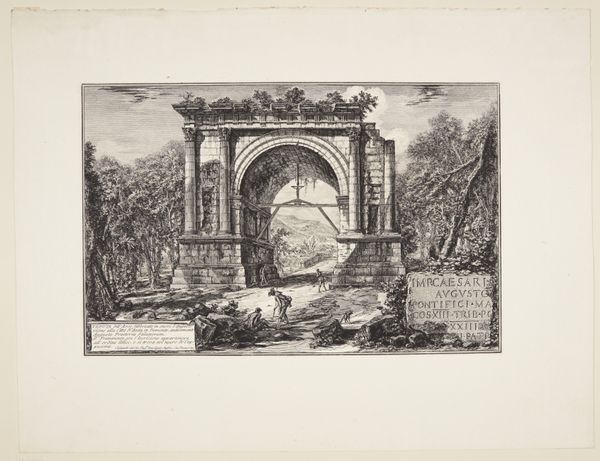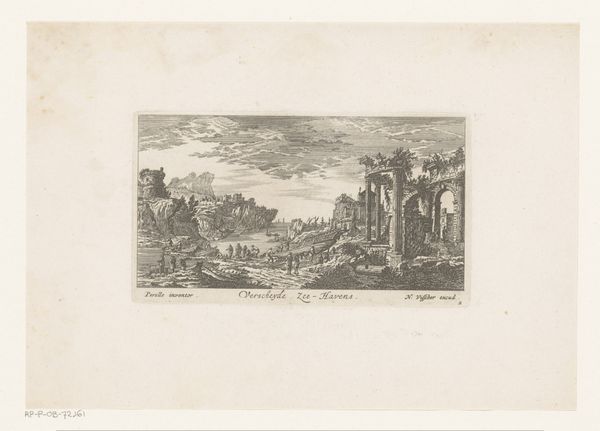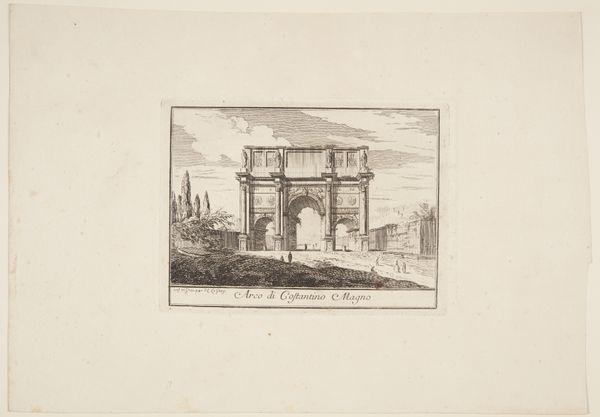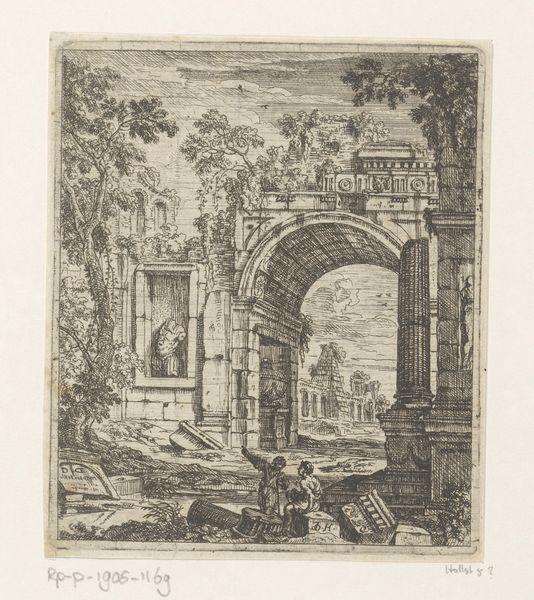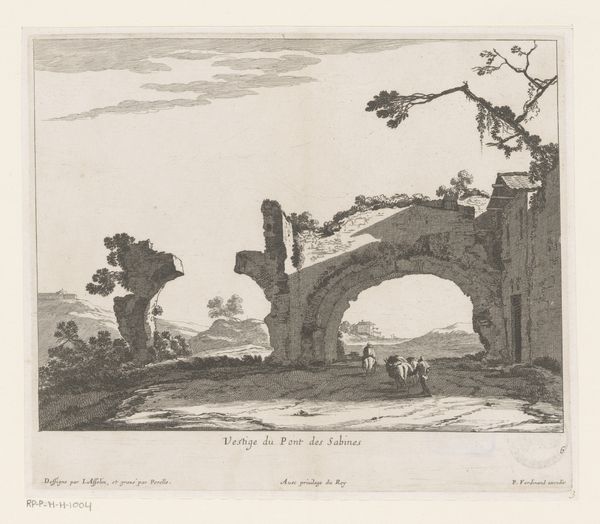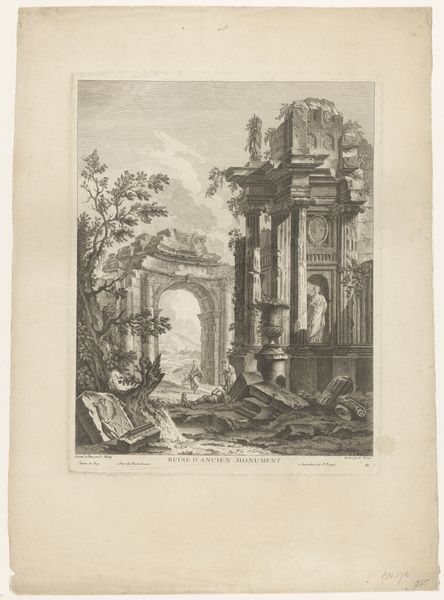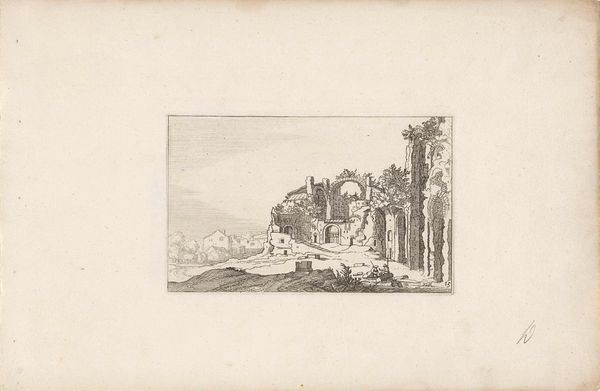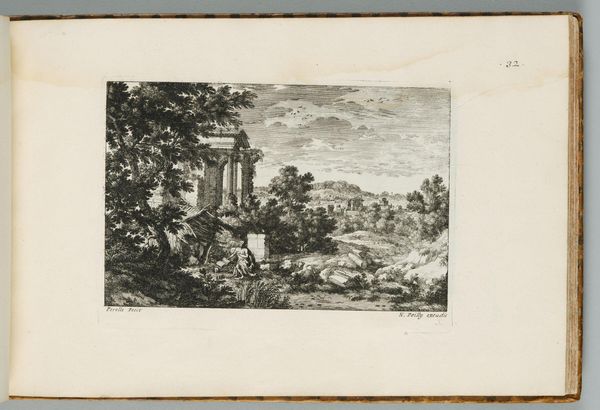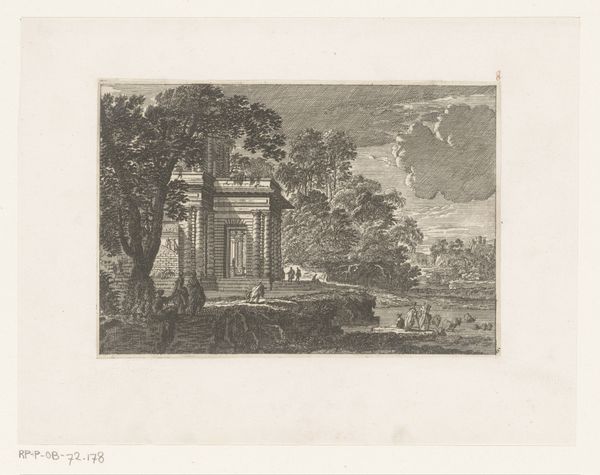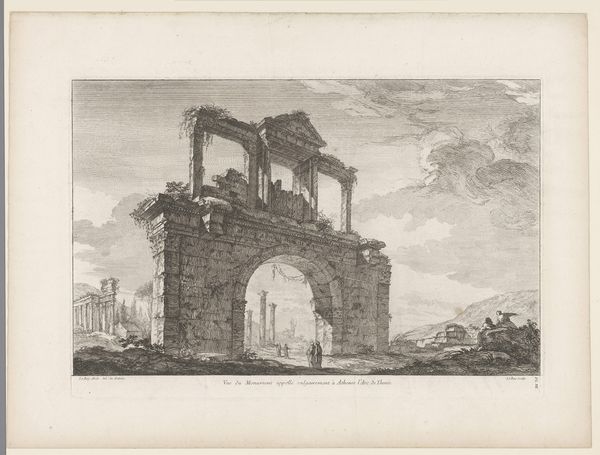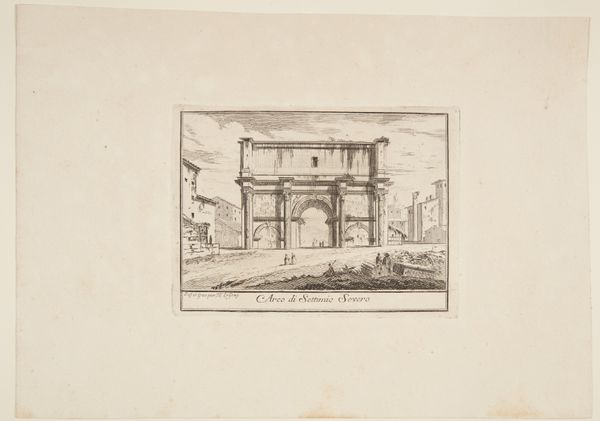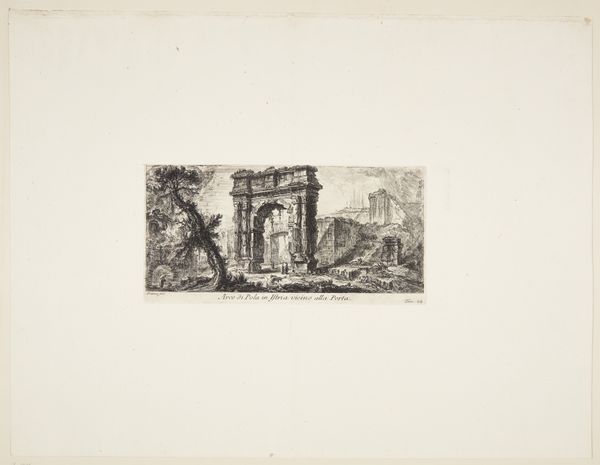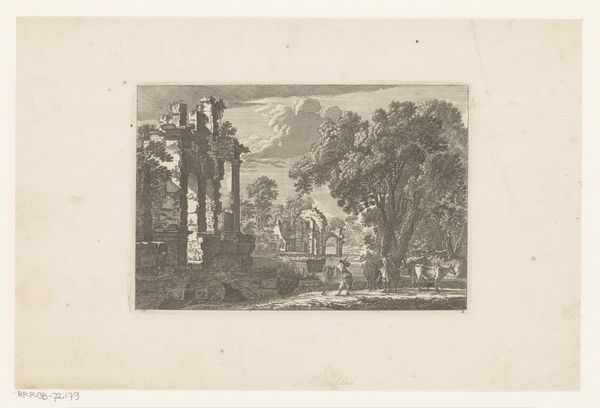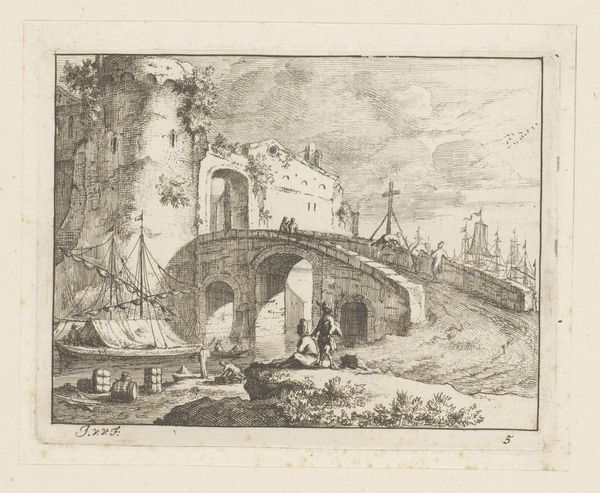
print, etching, architecture
# print
#
etching
#
landscape
#
etching
#
romanesque
#
history-painting
#
architecture
Dimensions: 78 mm (height) x 100 mm (width) (plademaal)
Curator: Let’s examine Johan Bülow’s etching, "Romerske ruiner," created in 1779. The artwork, translated as "Roman Ruins," showcases an intricate landscape dominated by crumbling architectural remains. Editor: It's a bleak image. The ruin depicted, a massive stone arch, dominates the composition and immediately establishes a somber mood, suggesting a powerful empire's fall. Curator: Precisely. Note Bülow’s meticulous rendering of textures and the interplay of light and shadow. Observe how the precise lines, achieved through the etching technique, define form and space. The artist utilizes hatching and cross-hatching to create depth. It's an austere aesthetic that heightens the work’s dramatic quality. Editor: Austere, yes, but the drama you mention is linked directly to its depiction of power, of historical shifts, and of the ever-present human condition of being, inevitably, in decline. I see commentary on systems, societies and how nothing truly remains standing despite its intent to do so. Even the figure walking under the arch is a symbol of humanity persisting as systems around them evolve and/or decline. Curator: You raise an important point about perspective. The placement of that lone figure against the monument underscores scale, further illustrating the monumentality, but I'm curious about the classical influence. Bülow seems engaged in a formal dialogue with ideal form, filtered, of course, through the prevailing aesthetic lens of his time. It reminds me of Piranesi's more elaborate compositions, just in miniature. Editor: And there is the problem; the historical context is limited. Bülow is, perhaps, using ruins as a form, a language to suggest things that may extend well beyond classicism. As ruins have always captured the imagination, in so many epochs and territories, the symbol is historically flexible and adaptive and therefore relevant even today in many social justice scenarios. Curator: I appreciate you emphasizing that duality, revealing a fascinating, contemporary resonance to this otherwise, seemingly historic piece. Thank you for that insight. Editor: Thank you for the initial formal analysis that grounds the image for a deeper conversation about it.
Comments
No comments
Be the first to comment and join the conversation on the ultimate creative platform.
